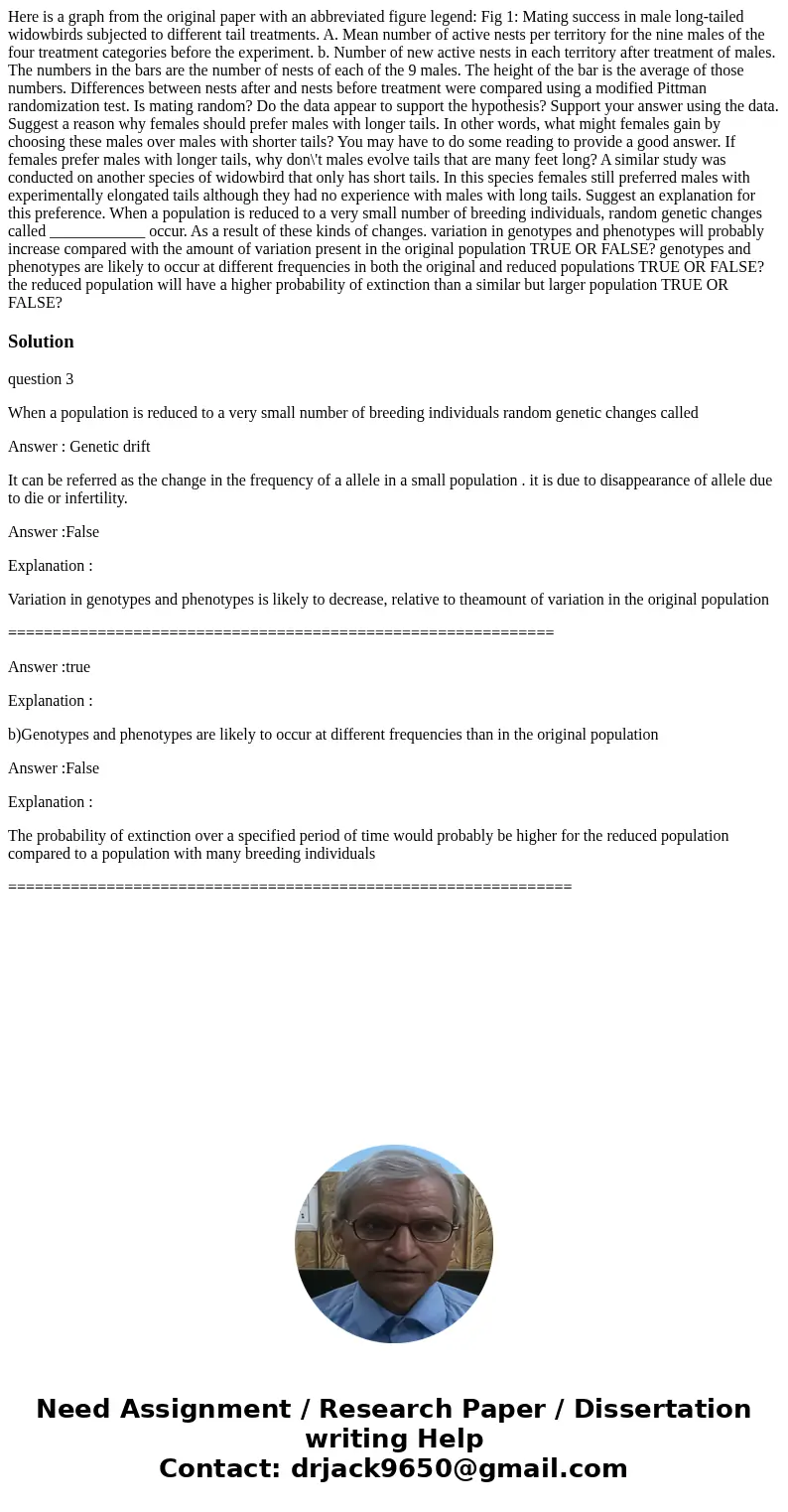Here is a graph from the original paper with an abbreviated figure legend: Fig 1: Mating success in male long-tailed widowbirds subjected to different tail treatments. A. Mean number of active nests per territory for the nine males of the four treatment categories before the experiment. b. Number of new active nests in each territory after treatment of males. The numbers in the bars are the number of nests of each of the 9 males. The height of the bar is the average of those numbers. Differences between nests after and nests before treatment were compared using a modified Pittman randomization test. Is mating random? Do the data appear to support the hypothesis? Support your answer using the data. Suggest a reason why females should prefer males with longer tails. In other words, what might females gain by choosing these males over males with shorter tails? You may have to do some reading to provide a good answer. If females prefer males with longer tails, why don\'t males evolve tails that are many feet long? A similar study was conducted on another species of widowbird that only has short tails. In this species females still preferred males with experimentally elongated tails although they had no experience with males with long tails. Suggest an explanation for this preference. When a population is reduced to a very small number of breeding individuals, random genetic changes called ____________ occur. As a result of these kinds of changes. variation in genotypes and phenotypes will probably increase compared with the amount of variation present in the original population TRUE OR FALSE? genotypes and phenotypes are likely to occur at different frequencies in both the original and reduced populations TRUE OR FALSE? the reduced population will have a higher probability of extinction than a similar but larger population TRUE OR FALSE?
question 3
When a population is reduced to a very small number of breeding individuals random genetic changes called
Answer : Genetic drift
It can be referred as the change in the frequency of a allele in a small population . it is due to disappearance of allele due to die or infertility.
Answer :False
Explanation :
Variation in genotypes and phenotypes is likely to decrease, relative to theamount of variation in the original population
=============================================================
Answer :true
Explanation :
b)Genotypes and phenotypes are likely to occur at different frequencies than in the original population
Answer :False
Explanation :
The probability of extinction over a specified period of time would probably be higher for the reduced population compared to a population with many breeding individuals
===============================================================

 Homework Sourse
Homework Sourse